The Sea and the Butterfly.
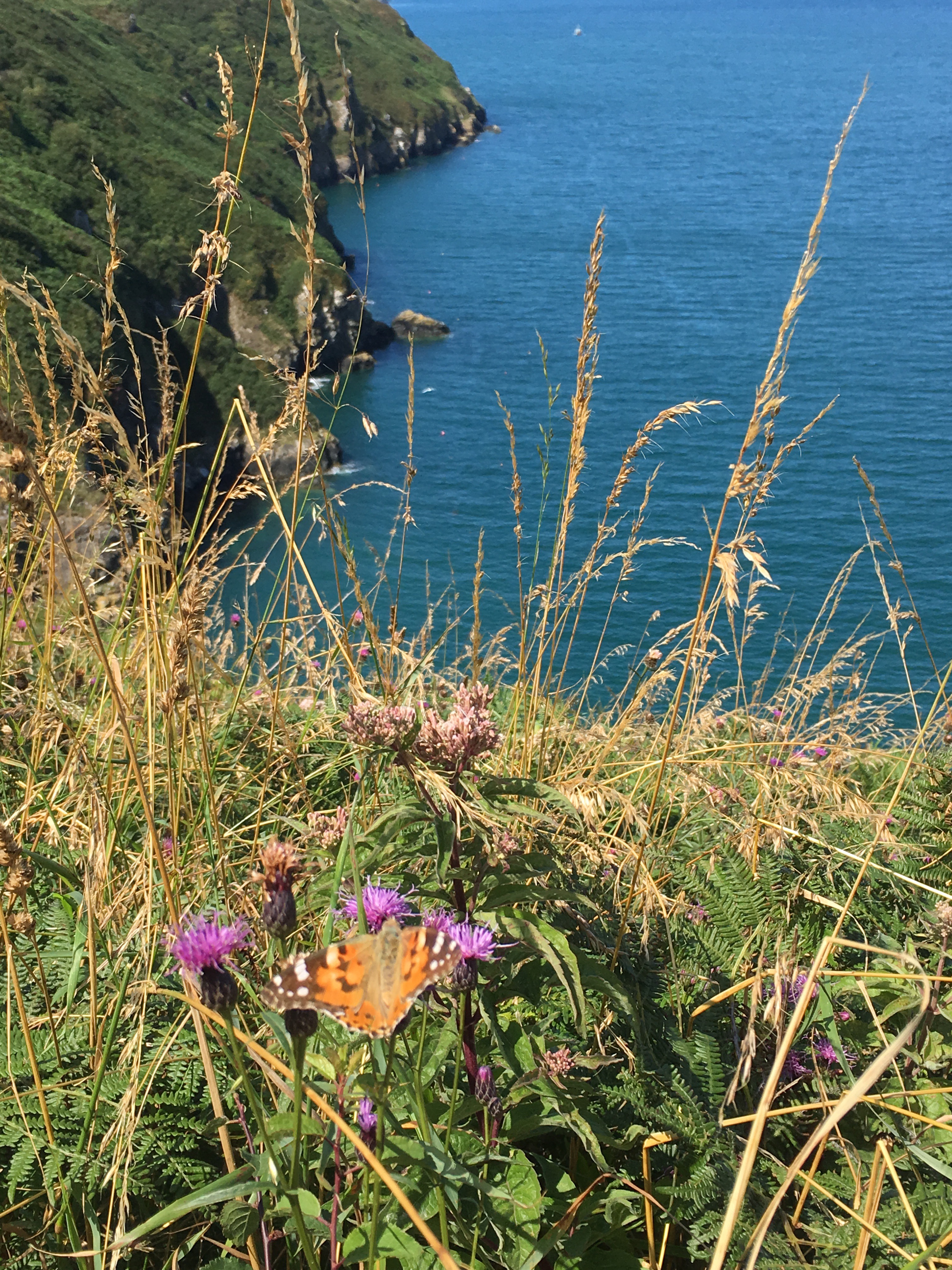
On the Pembrokeshire coast path with my daughter, on the first evening of our holiday, we walk right up the aisle of an ant wedding, taking place either side of the dusty path. Choosing the warmest, most still of summer days, the ants have grown wings for their nuptial flight, as will those in many other colonies in this particular micro climate at this precise moment in time. This strategy lessens the chance of inbreeding and maximises that of mating. We walk through the wildflowers: our hair, bridal veils of twinkling silver and gold wings. Swallows swoop on the opportunity, above.
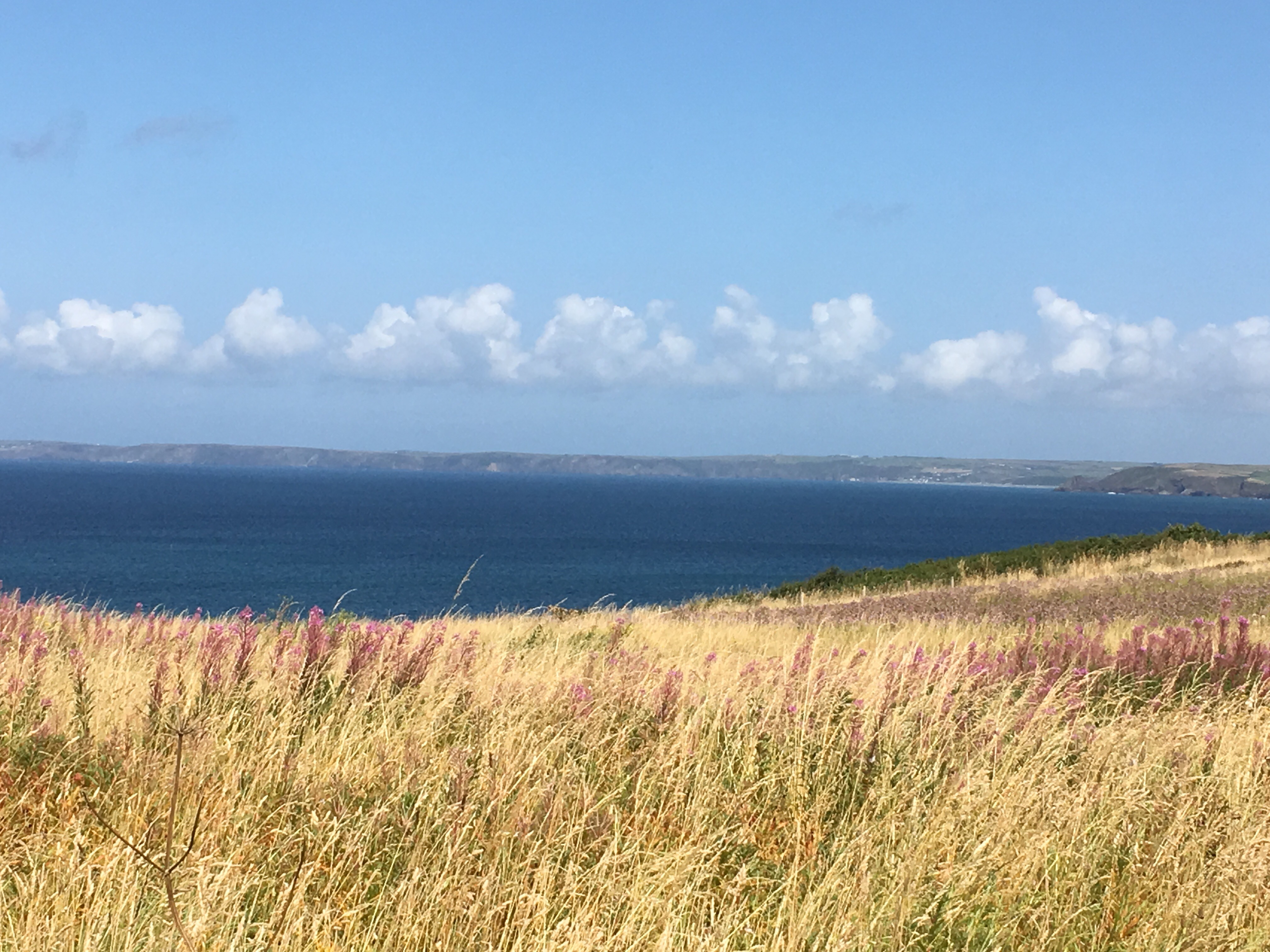
The following day, we travel back across the cliff path. The sea is a sparkling draw and the cove our aim, but we dawdle, distracted again by the meadows. Goldfinches tease clumps of drifting thistledown with temporary moustaches, and bees and hoverflies rest on knapweed, vetches, sea campion and marjoram. But it is the butterflies that really catch our attention. There seems a relative abundance of little gatekeepers this year and here, on the coast, wall browns. The name does not do these small, chequered-orange insects justice, dancing up at our feet in spiralling ‘leks’ like tiny fritillaries. I have not seen one for years. They are almost extinct in Southern and Central England, victims of climate heating. Rather than overwintering as caterpillars, the warmer weather encourages them to hatch into butterflies and, meeting the inevitable cold and absence of food plants, the generation is lost; they can’t survive. But on the coastal margins, where the climate is on average 1.2 degrees cooler, wall browns winter through as caterpillars, as they always have done.
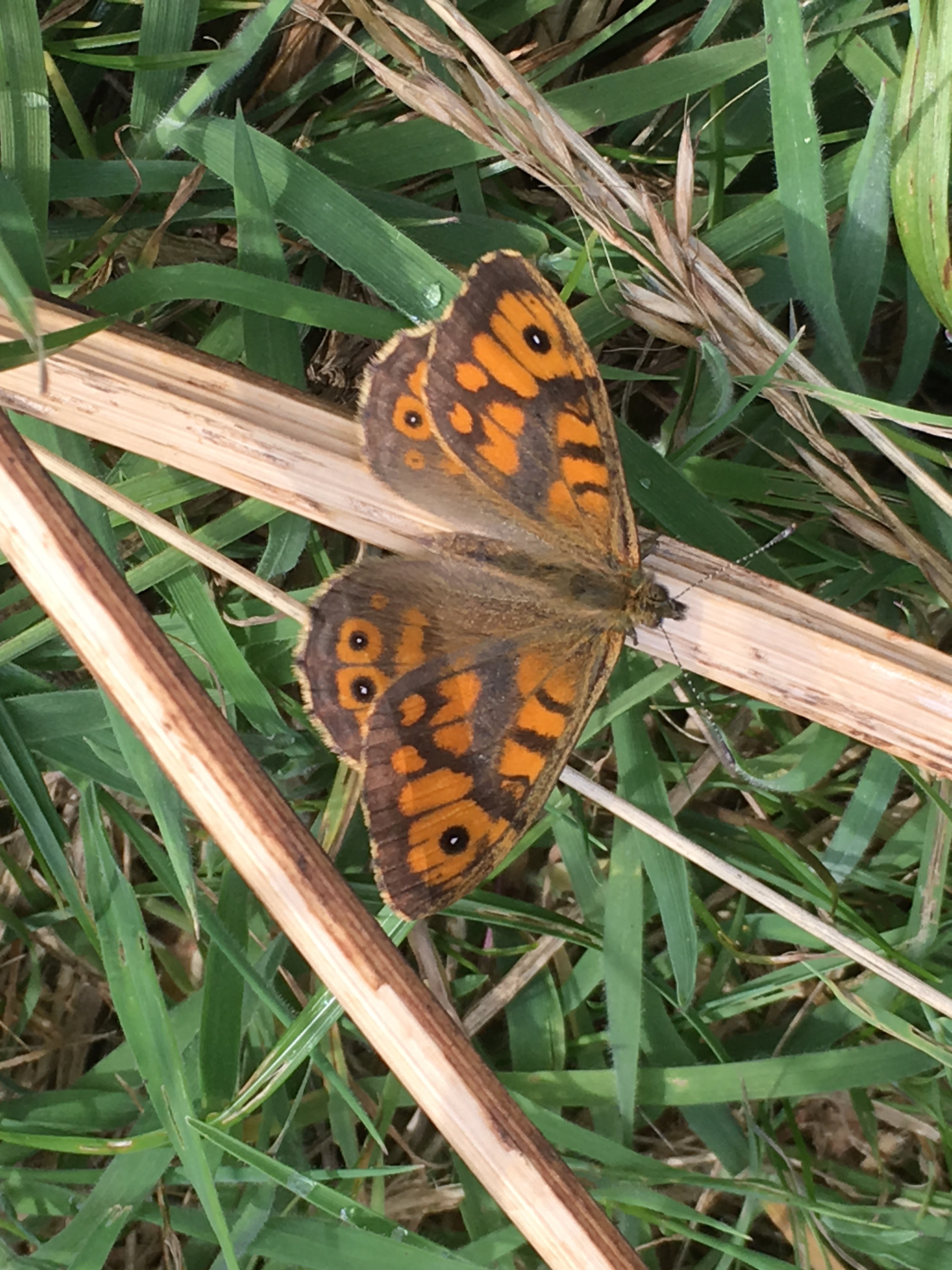
We are in the sea when the much-talked of ‘influx’ of painted lady butterflies arrives here. Once a decade, numbers of this migratory butterfly build to a spectacular crescendo. Coloured like rich Victorian floor tiles, in tortoiseshell-orange, black and white, these powerful butterflies complete a 7,500 mile journey, in an annual, generational relay from Sub-Saharan Africa to the Arctic Circle and back. Travelling at around 30mph, half a mile up and staging around 100 miles a day, the butterfly goes through several different generations of themselves in a journey of constant renewal and metamorphoses. Our butterflies are a mix of those that have hatched here and those that have come across the sea from continental Europe.
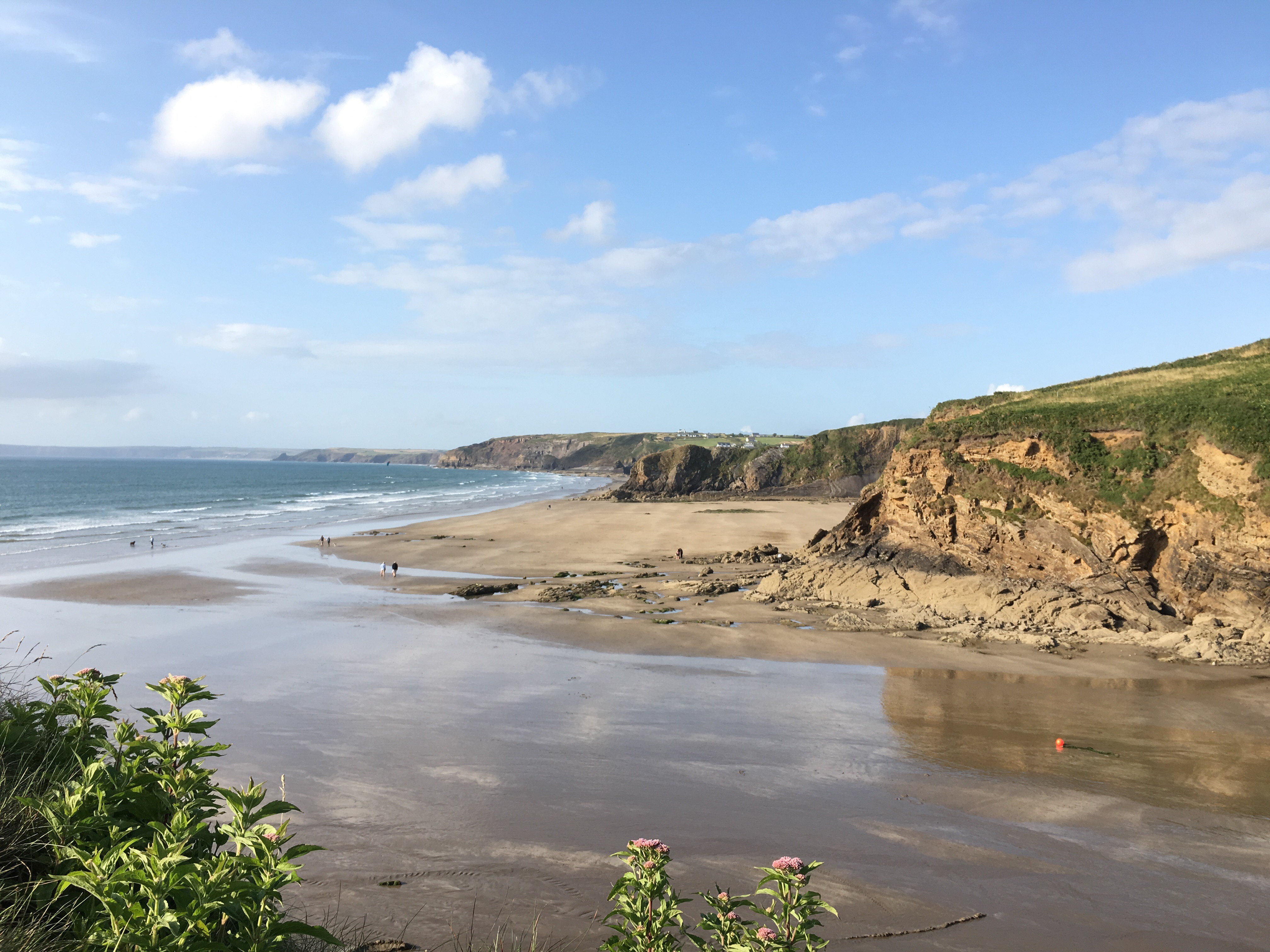
We launch into the sea and relish the cold water closing around our necks. The sea is flat calm between a succession of building rollers. There is a warmish wind and spots of warm, fat rain fall onto our shoulders. A flock of oystercatchers blink black and white above us and gulls glance the surface and our ears. And then suddenly, there are butterflies coming in off the ocean, flying towards us. We treadwater, marvelling at them. That such a fragile-seeming creature could come all that way – a bit of printed silk, really; some of them tattered and faded as our summer grasses, sun and weather burnished, like battered old travelling cases. But then – they are a creature all wings and flying mechanism and little else. Light, and buoyed by the wind, why would we ever doubt them?
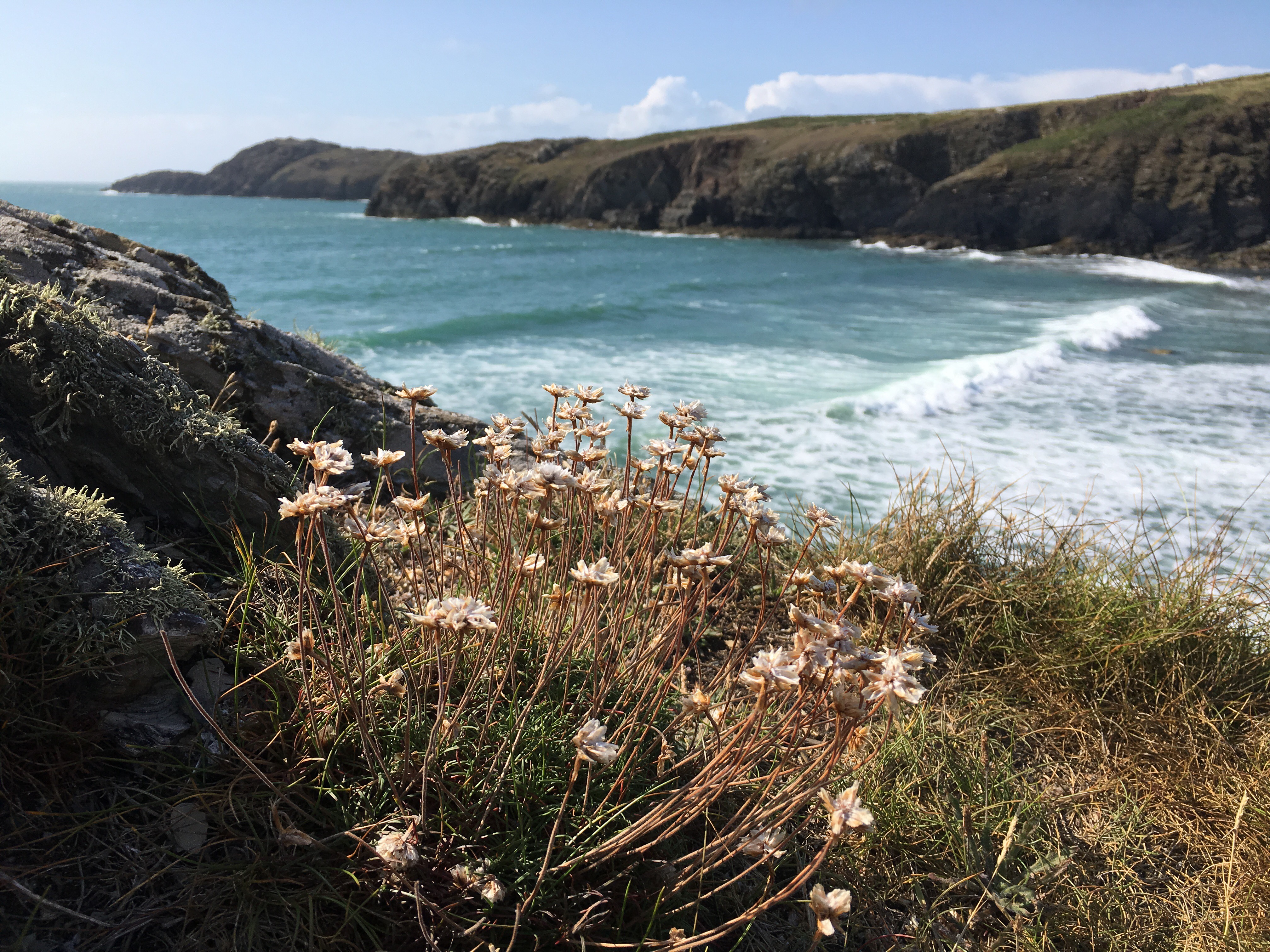
When we walk out of the sea, they are all over the little village’s buddleia bushes, balancing on glinting pint glasses, probing spilt droplets of lemonade. Our hair, briney and sea-salted, spiralled and tousled by the wind into ringlets, dries like snakelocks anemones.
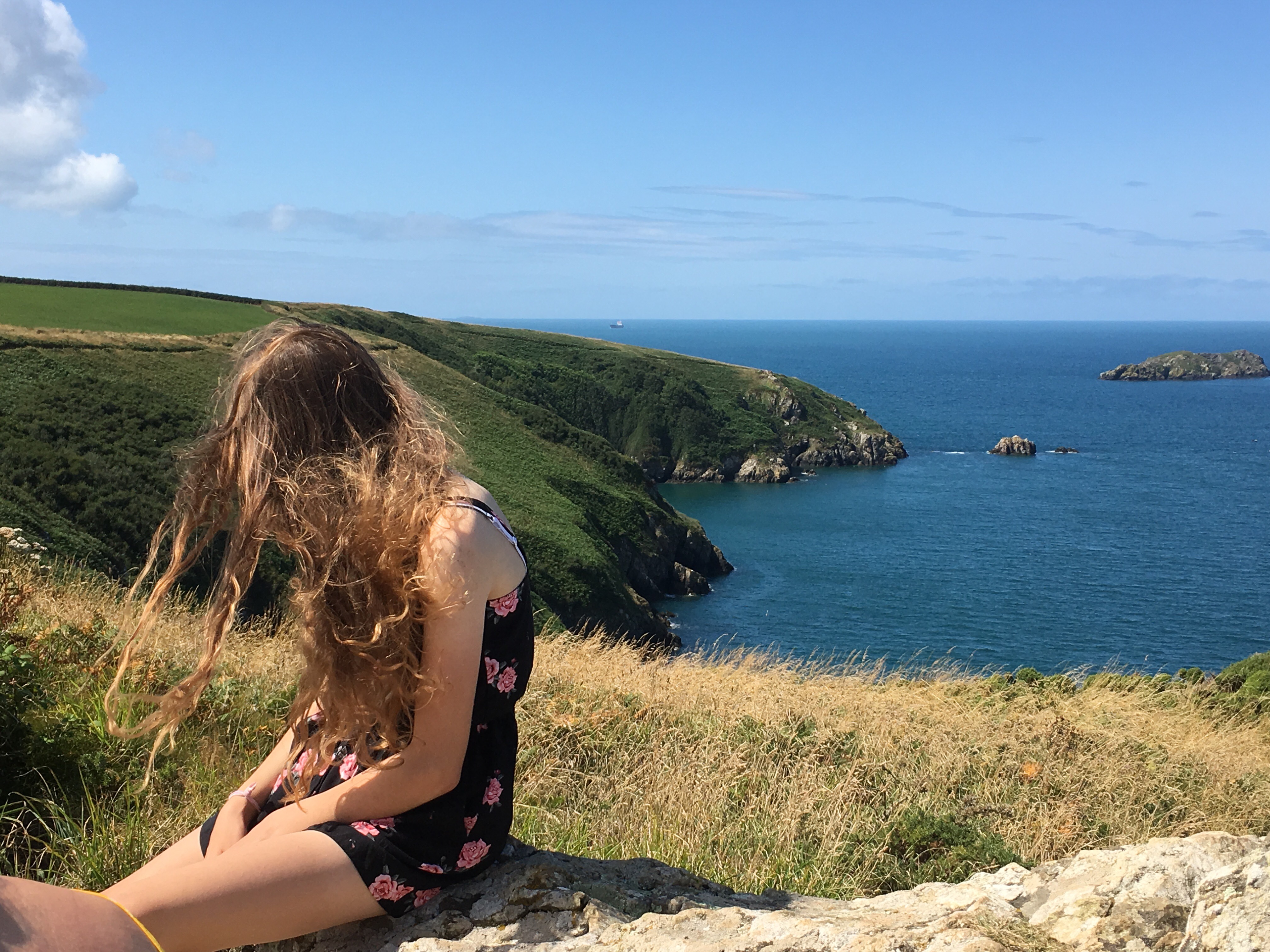
Leave a comment